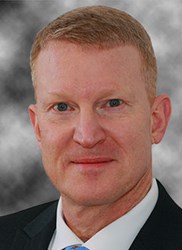Place Matters In A Global Pharmaceutical Industry
By Louis Garguilo, Chief Editor, Outsourced Pharma

Fadia Alkhalil’s comments at Outsourced Pharma West in San Francisco reminded me of “All Business Is Local,” a book by John A Quelch and Katherine E. Jocz. The authors believe organizations gain a competitive advantage if they integrate aspects of “place” by moving from the local geographic to a global overview, and from the functional to the psychological aspects associated with both realms.
I followed up with Alkhalil, VP Global Alliance & Partnering, SGS Life Science Services, to compare the book’s thesis with her experiences on the front line. Her division of the SGS organization provides testing and other services at all levels of the biopharmaceutical supply chain in 27 facilities in 14 countries. In short, SGS is an enabler of the movement of physical product from place to place.
The Confidence of Global
“I used to be a client,” Alkhalil starts, remembering earlier in her career at Pfizer. “The global aspect starts from the desire for stability. When pharma needs testing and validation somewhere in the world,  they want to make sure you stay put. If a lab shuts down, clients have to rush around to find another FDA-approved lab. It’s an advantage to be backed by a financially stable, global corporation.”
they want to make sure you stay put. If a lab shuts down, clients have to rush around to find another FDA-approved lab. It’s an advantage to be backed by a financially stable, global corporation.”
There’s also the advantage of consistency. “The biopharma client needs to know material has undergone the same testing methods and requirements,” says Alkhalil. She provides the example of a transfer of materials between facilities in China and India before heading to a European market.
Consistency, though, can’t eliminate all differences presented by location. “Employees are trained the same way using identical methods. At the same time,” she says, “these are local scientists within geographical and cultural settings.” And local management may best understand intricacies of political boundaries, local competition, labor laws, regulations, taxes, and trade agreements that could govern services and products.
Which leads to the primacy of place.
Focus On Local
Alkhalil was born in Lebanon, moved to France as a teenager, and then finished her education with a Ph.D. and MBA in the U.S. However, it is not the sum of locations creating the ideal of internationalism that excites her. Rather, it is in discovering what each place has to offer on its own, and understanding how to succeed there. She thinks biopharma should take this more nuanced view.
“My advice to pharma would be don’t focus so intently on the big picture. The small pictures count more most of the time,” she says. “In the end, the local venue is conducting the business and doing your work.”
She’s not keen on pharma’s sending comprehensive RFI/RFPs to service providers in an effort to know everything on a global level. “They get something generalized,” Alkhalil says. “I think they lose value.” She says it’s better to spend that time on details at the local level. “There are different people in every lab even here in the U.S. We have the same SOPs, but everyone grasps information differently.”
Alkhalil may very well have her own reasons to offer up this advice. As stated clearly by Quelch and Jocz, “Global contracts that consolidate procurement inevitably advantage the buyer rather than the seller.” Nonetheless, hers is a valid call to action. Some multinationals struggle with this concept of place. Pharma sped to China, India and other locations to add value to the supply chain (and open new markets). Particularly, global procurement has mashed the world together in a large bucket; places only get segregated when there are negative developments. Now there could be a growing appreciation of the real differences amongst localities.
Alkhalil believes an advantage in progressing from small pictures (local) to the big picture (global) is any unique or additional advantages a locality provides won’t get overlooked. Another is the global customer can actually learn more of the broader industry trends in a specific region by understanding the particulars of place.
Quelch and Jocz say this is being “intelligently local,” and that when “trying to add value … place remains one of the most reliable bases for targeting and positioning decisions.” According to them, this can include a greater role for local management—both on the customer and provider sides. I asked Alkhalil about this last assertion.
Is The Partner In Place?
“We are a matrix company,” Alkhalil says regarding the autonomy of local management, and echoing “All Business Is Local” in its chapter on management models for global corporations.
But even for a global company serving various industries since the late 1800s, managing for worldwide success on the local scale, so to speak, is challenging. “Trust me, it is not always easy to implement,” she says. Each region has a COO in charge of operations, while at their headquarters in Geneva, EVPs look after the overall business. This provides the local operations with a global business window.
Can each lab hire locally to maintain strict cGMP protocols and manage to global customer service standards? Alkhalil says yes. Generally, the first hires are the management positions, which get trained and then hire for the bench. “We rarely need to bring people into a country because there isn’t enough local talent,” she says.
Quelch and Jocz write that workers from outside a locality might not fully understand differences in culture, or the nuances of the local customer, even if that customer represents multinational organizations. And regardless of pharma’s penchant for global procurement-driven approvals, it is still the local entity that makes the final choice of provider.
They offer an example from the banking industry. “When we have a bad experience with a global brand or in a far-off local, we become more willing to trust the local neighborhood bank … than some global or national bank.” The solution for a multi-national organization? Be both. They point to the HSBC slogan: “The World’s Local Bank.”
Perhaps that’s easier said than done, but local customers are focused on ensuring their part of the supply chain operates trouble-free. Alkhalil says if perceived from place to place as a trusted local partner, challenges that arise are overcome with clients locally and quickly.
How do you conduct business development with local/global customers? SGS has 25 key pharma accounts with dedicated, global sales teams reporting directly to Geneva and that assist regional sales managers. The local managers independently handle smaller accounts. According to Quelch and Jocz, that’s a textbook sales structure for integrating place.
“It’s not like the old days when every department was negotiating a contract,” she says. Customer relationship management can’t work any longer without both a strong local and global component. If anything, though, recent history has the balance over-weighted to the global side.
All The Paces To Be
Quelch and Jocz list four aspects of place: physical, geographic, psychological and virtual. They point to how advertising evolved from “extolling the functional benefits of products to forging emotional connections,” by among other things, establishing a connection with buyers using the imagery of place. They also remind us, “When there is a problem, we need local service and support.” They use an example most Americans are familiar with, and one perhaps applicable to all four places, citing the tagline: “Like a Good Neighbor, State Farm is there.”
Back at Outsourced Pharma in San Francisco, Alkhalil said, “I’m all about this discussion of localization and globalization in international business strategy.” Our subsequent discussion demonstrates that when it comes to understanding place as described by Quelch and Jocz, she appears to be in a good one.
